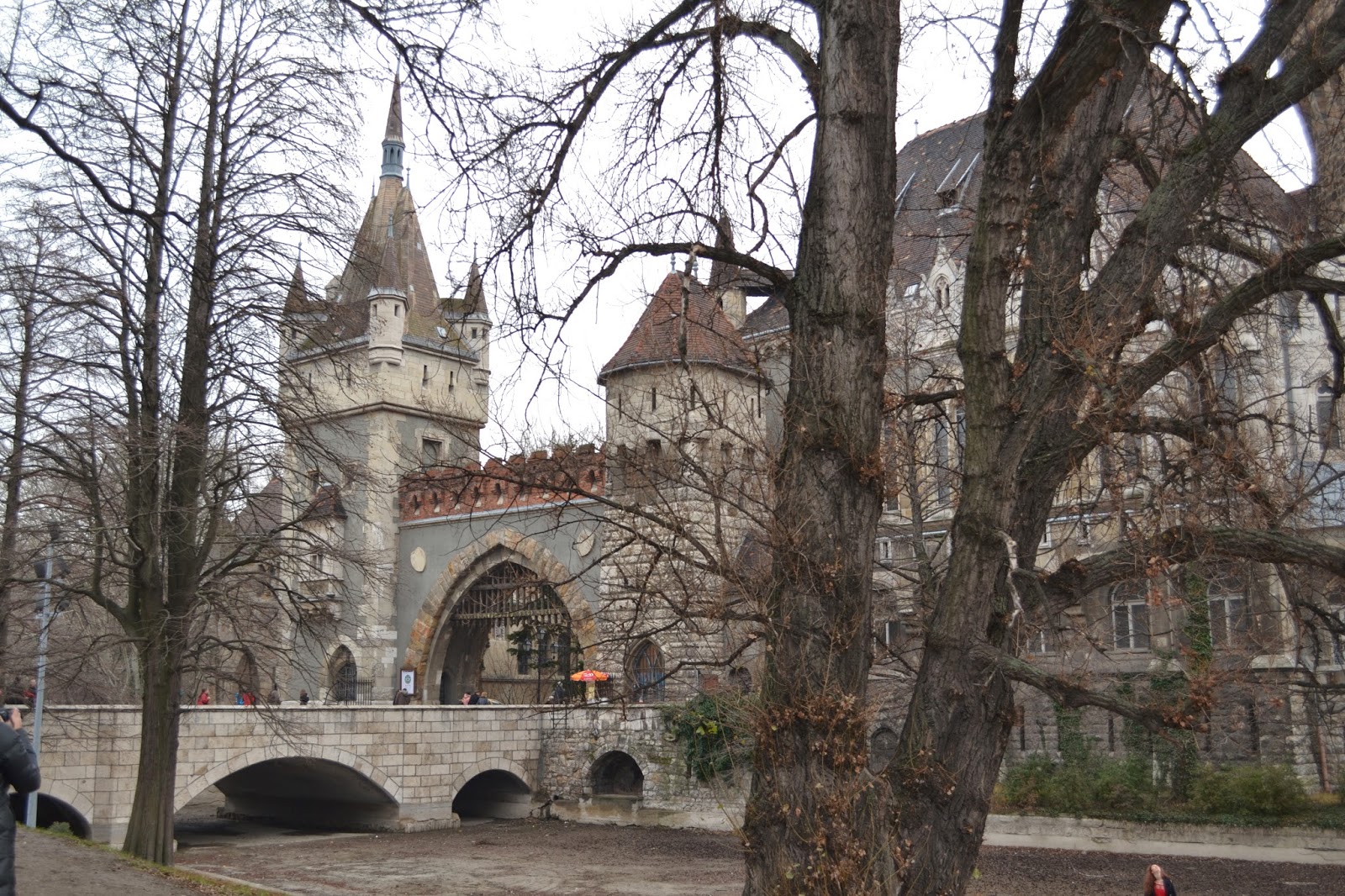 |
| Opera House |
We took the Big Bus tour again and headed for Hero Square with sites on the way such as the Opera House.
Hero Square was built in 1896 to celebrate thousandth anniversary of Hungary. The following was taken from visitbudapest.travel website. Thought it would explain it much better than we could.
"The Millennium Monument in the middle of the square was erected to commemorate the 1000-year-old history of the Magyars. Archangel Gabriel stands on top of the center pillar, holding the holy crown and the double cross of Christianity. The seven chieftains who led the Magyar tribes to Hungary can be seen on the stand below. Statues of kings and other important historical figures stand on top of the colonnades on either side of the center pillar.
When the monument was originally constructed, Hungary was part of the Austro-Hungarian Empire and thus the last five spaces for statues on the left of the colonnade were reserved for members of the ruling Habsburg dynasty. The Habsburg emperors were replaced with Hungarian freedom fighters when the monument was rebuilt after World War II."
 |
| Seven Chieftains who led the Magyar tribe to Hungary. |
 |
| Our Hungarian Father - doesn't he look quite Eastern European? |
More information taken form visitbudapest.travel.
"City Park is the largest park in Budapest. The first trees and walkways were established here in 1751. In the first decades of the 19th century a park was created, which became the first public park in the world. In 1896 the Millennium Celebrations took place here, leaving many attractions behind.
Vajdahunyad Castle, a replica of a Transylvanian castle of that name, was built to show the various architectural styles found in Hungary, and has Romanesque, Gothic, Renaissance and Baroque parts. In the courtyard is the statue of Anonymus, the nameless medieval chronicler to King Béla. His work is the main source of information on Hungarian history through the Middle Ages, however the fact that there were four kings called Béla during the twelfth and thirteenth centuries makes it hard to identify him or the monarch. His face is hidden by a hood, making him anonymous, and yet portraying an interesting and important historical figure.
The castle is surrounded by an artificial lake that's used for boating in the summer and turns into an impressive ice skating rink in the winter, which is a local favorite. The history of the City Park Ice Rink (Városligeti Műjégpálya) goes back to the 19th century, when skating was considered a favorite winter pass time by the elite. It first opened on January 29th 1870 and Rudolf, Crown Prince of Austria, was present for the inauguration ceremonies."
Our next stop was up to the Castle district to see the Royal Palace that was first started in the 13th Century but through hundreds of years of modifications it was finally finished in 1908.
 |
| View from the Royal Palace |
 |
| Gavin took in a little Archery practice. |
All throughout the palace courtyards were statues. Not sure the meaning of this one, but I assume it has to do with hunting.
 |
| Nicole taking a try at Archery. |
 |
| Royal Palace |
| Matthias Church |
"The historic Matthias Church (Mátyás-templom) is over 700 years old. The church was the scene of several coronations, including that of Charles IV in 1916, the last Habsburg king. It was also the venue for the great Hungarian King Matthias' two weddings, hence its name.
The history of the church serves as a symbol of the city’s rich past. The eastern gate of the church was built in the 13th century, when Buda was founded following the Mongolian invasion. The central part of the church was built around 1400, and from as early as the 14th century, monarchs were crowned here as kings. In the 15th century, King Matthias’ royal wedding was also held here. During the Turkish conquest, soon after Buda was captured, the church became the city’s main mosque. The walls were whitewashed and covered with carpets. After the Turkish occupation, Buda lay in ruins. In the 17th century, an attempt was made to restore the church in Baroque style.
Following the Austro-Hungarian Compromise in 1867, Matthias Church was the scene of a big coronation ceremony when Franz Joseph and his wife Elizabeth were crowned, and thus the Austro-Hungarian Empire was established. Towards the end of the 19th century, a major reconstruction took place, and the building was restored using many original parts and regained much of its former splendor. The roof is covered with the famous Zsolnay ceramic tiles, making the building even more beautiful. Today, Matthias Church remains one of the city’s most prominent buildings. During his stay in Hungary in 1991, Pope John Paul II visited the church. "
 |
| Coree and Vika looking out of a tower at Fisherman's Bastion |
 |
| Gavin and Vika at Matthias church. |
 |
| Fisherman's Bastion |
 |
| Looking at Matthias Church from Fishermen's Bastion |
 |
| Matthias church |
LOVE Budapest and will definitely come back. Hopefully next year when we can bring Rachel with us.






















No comments:
Post a Comment